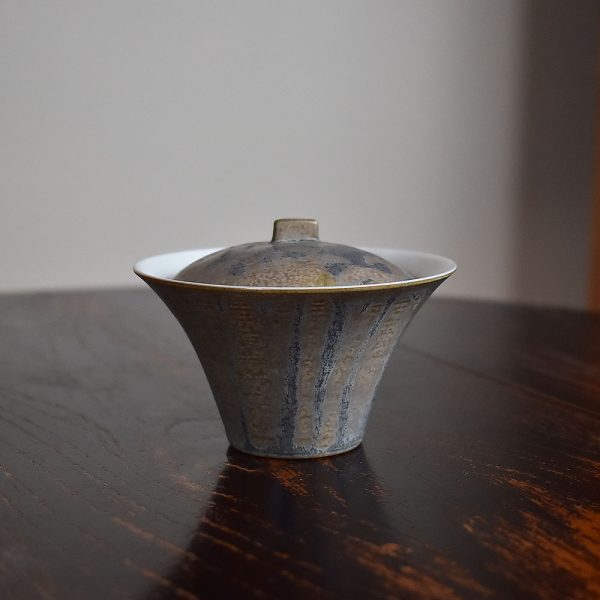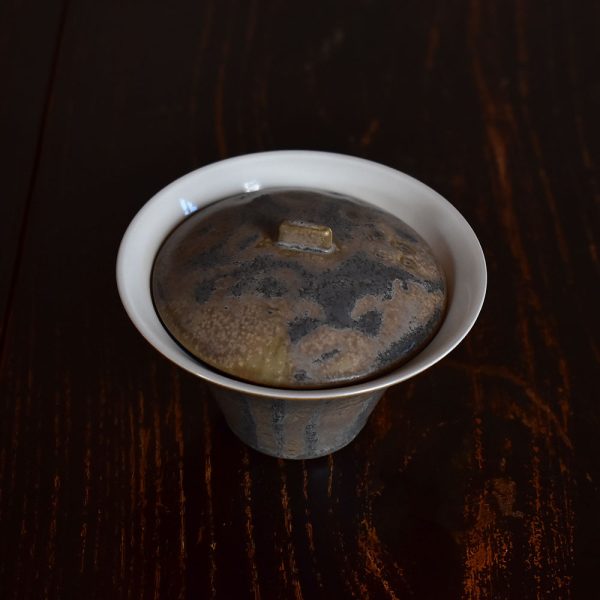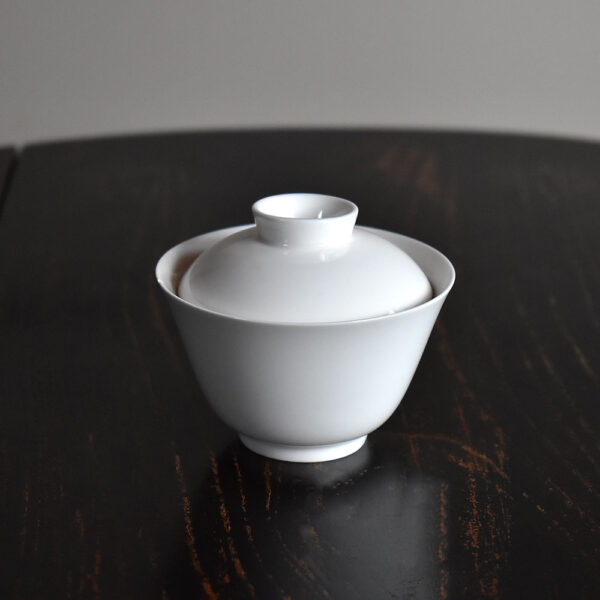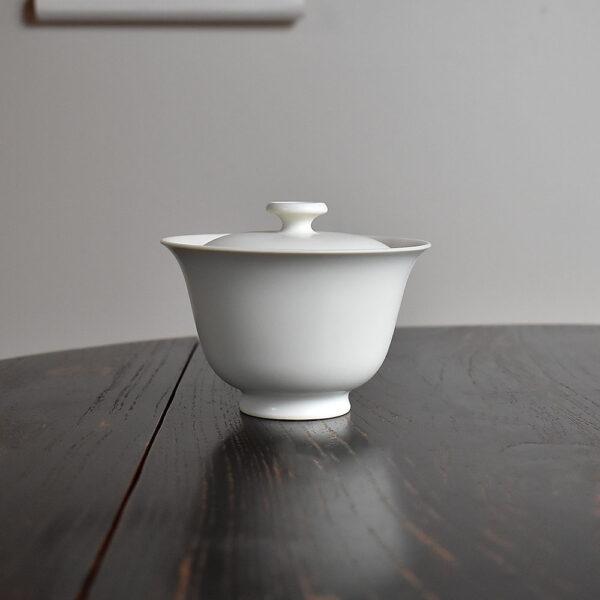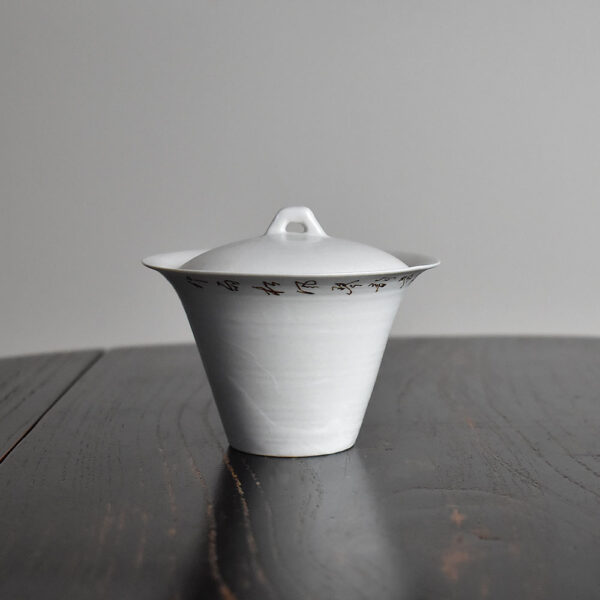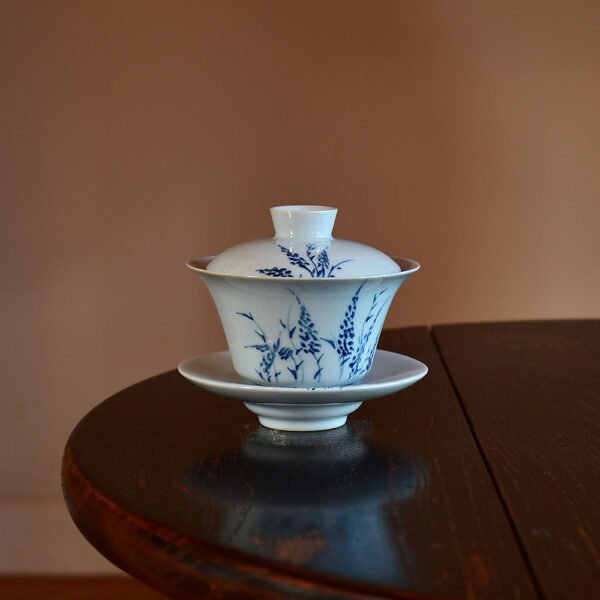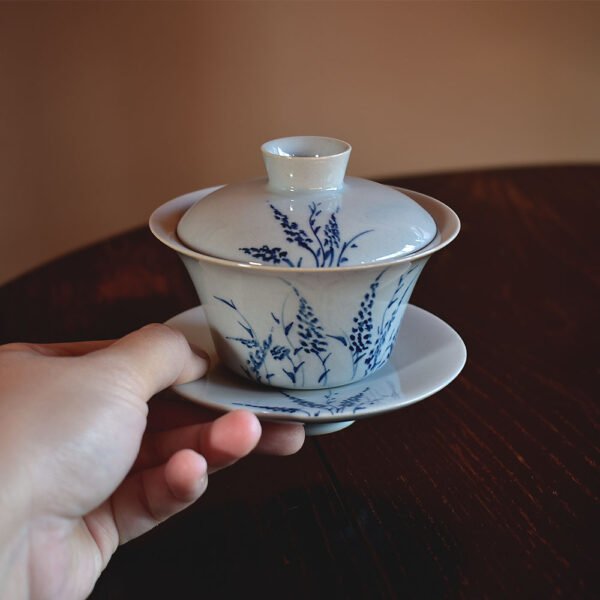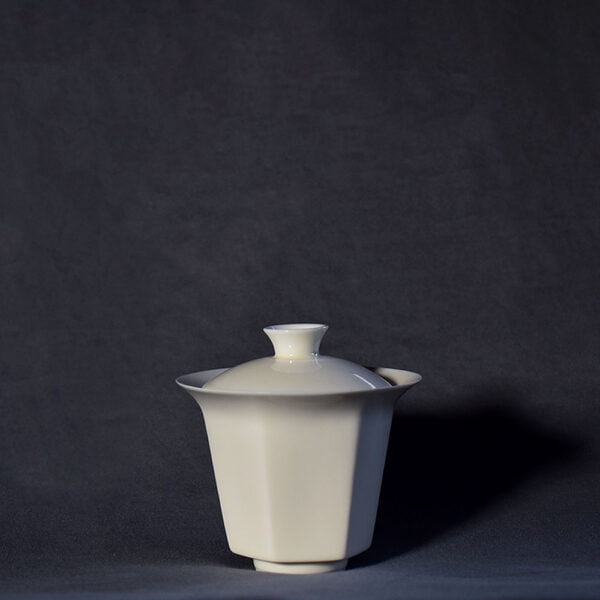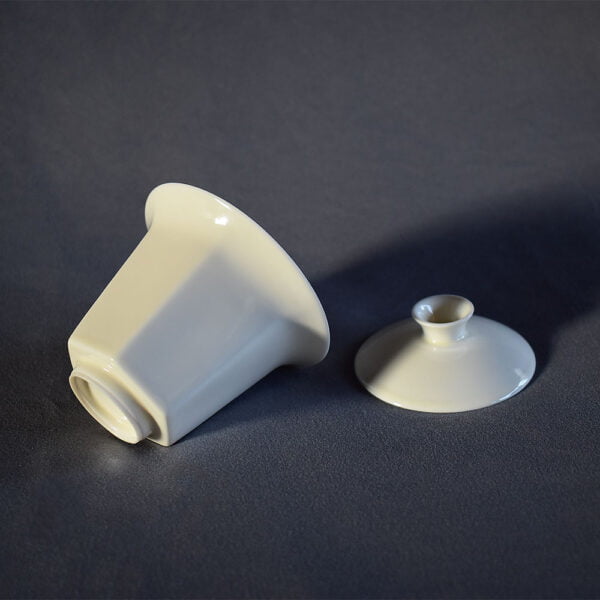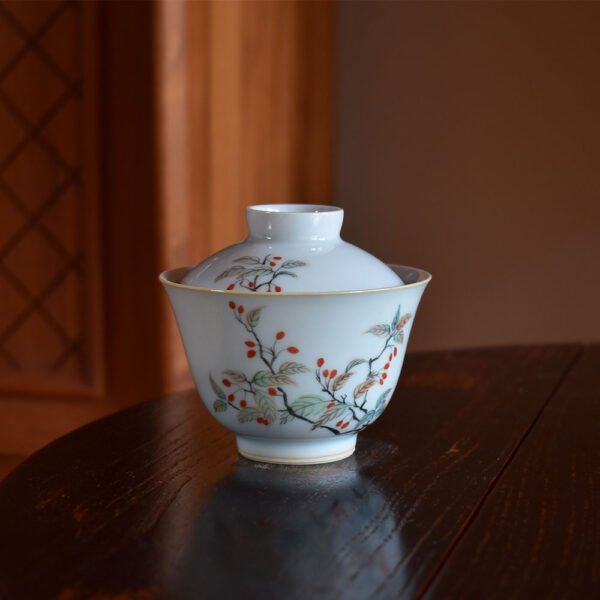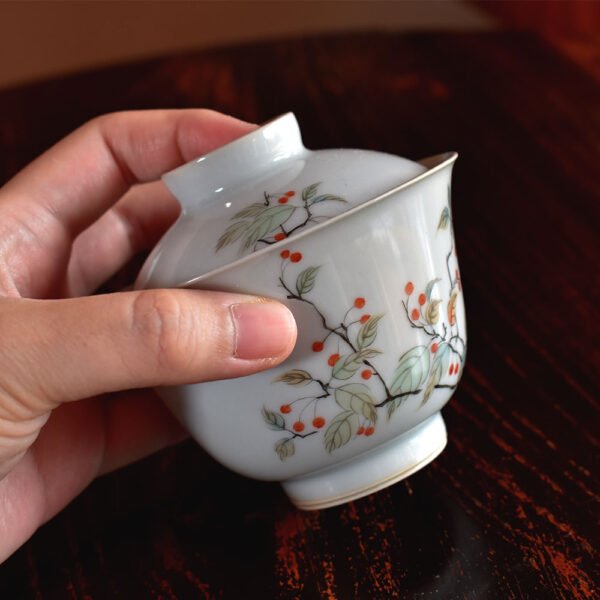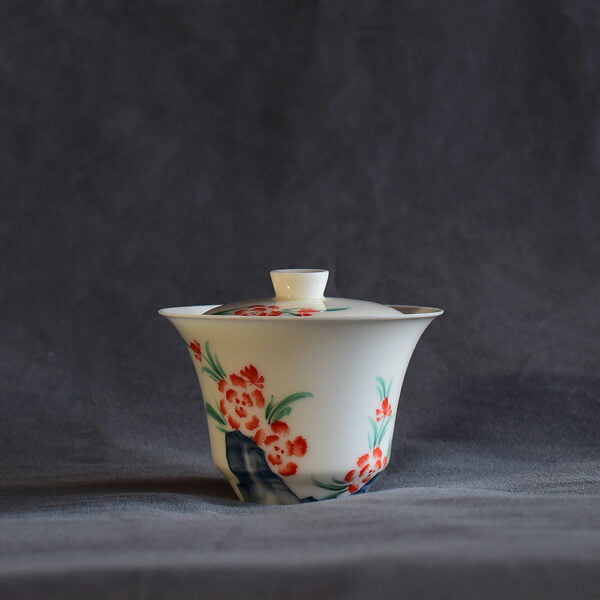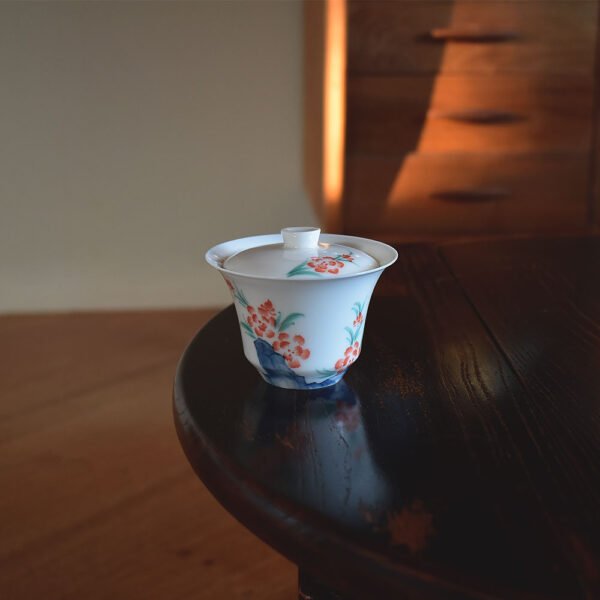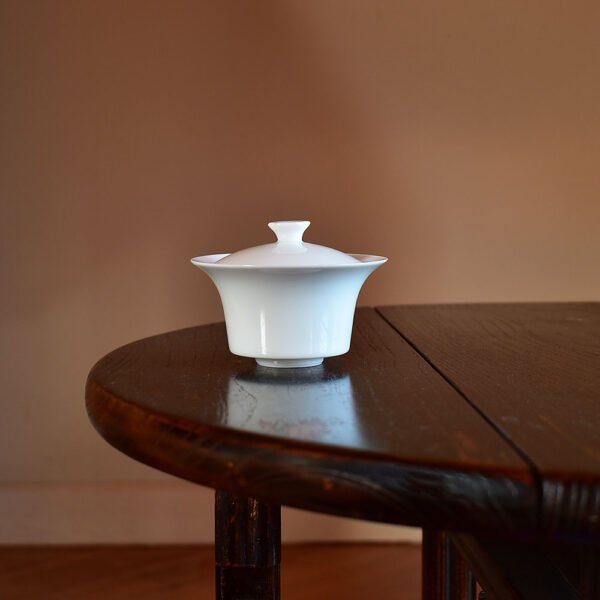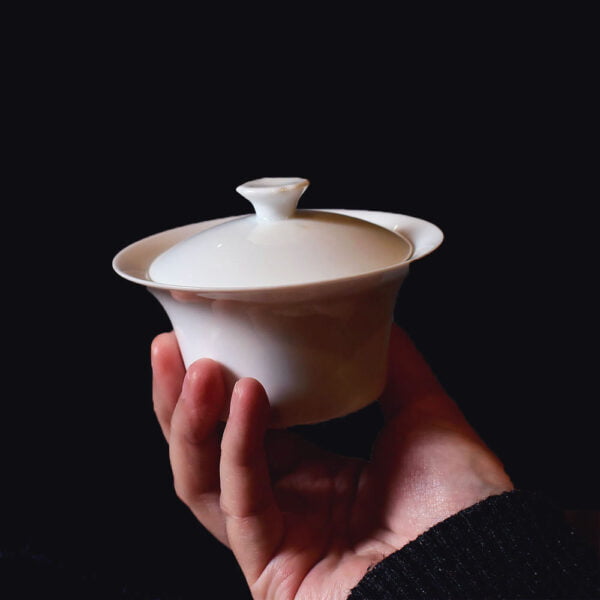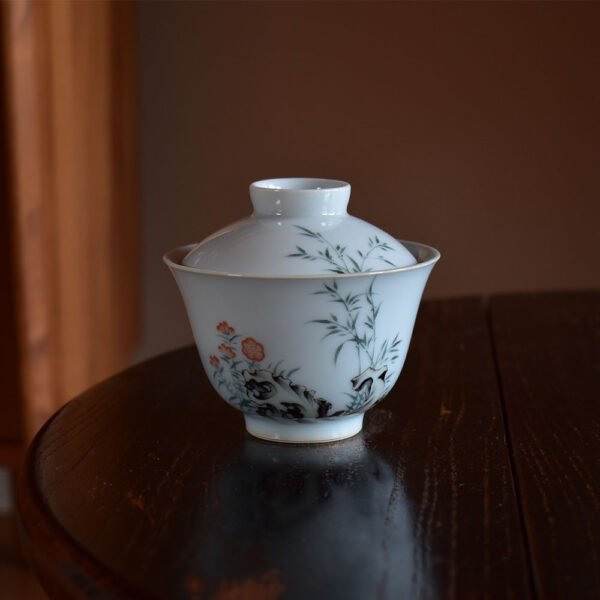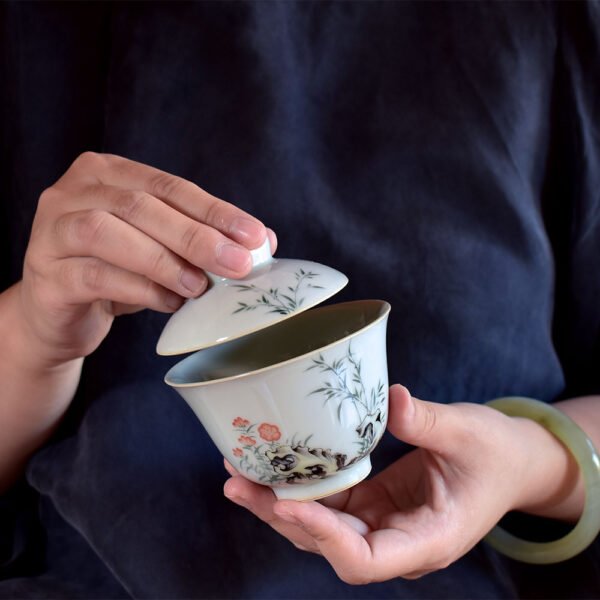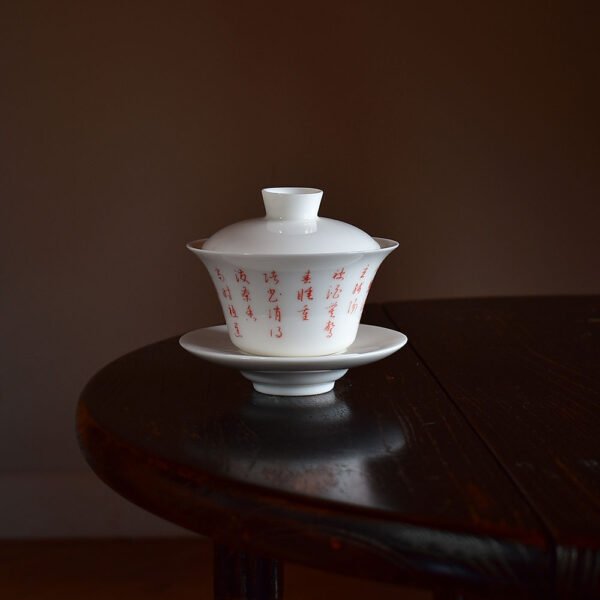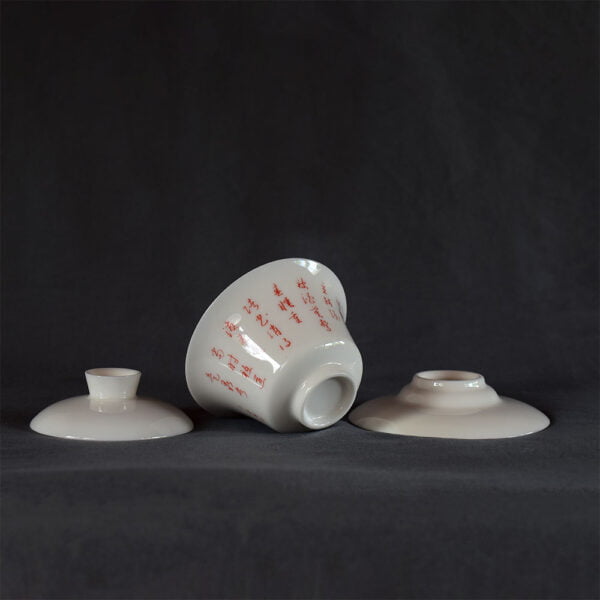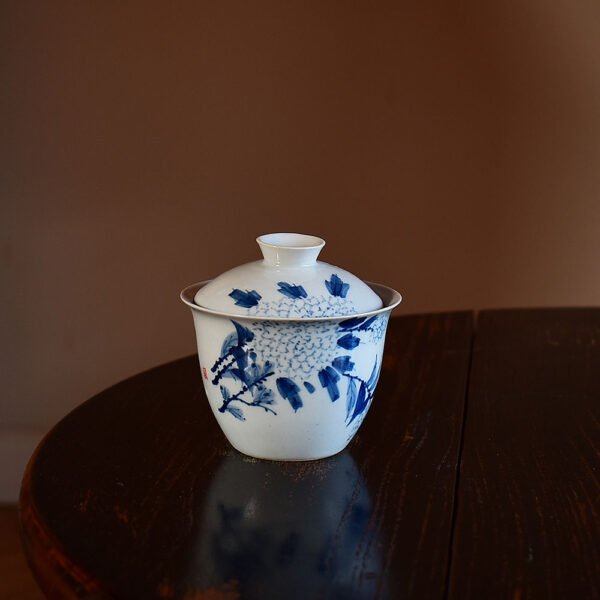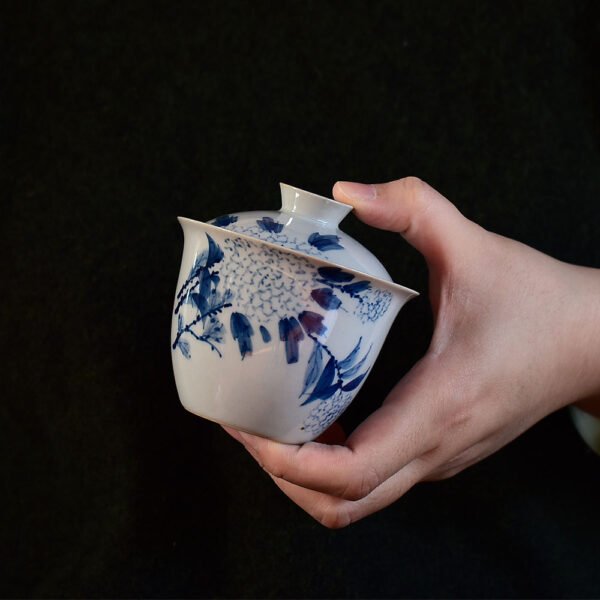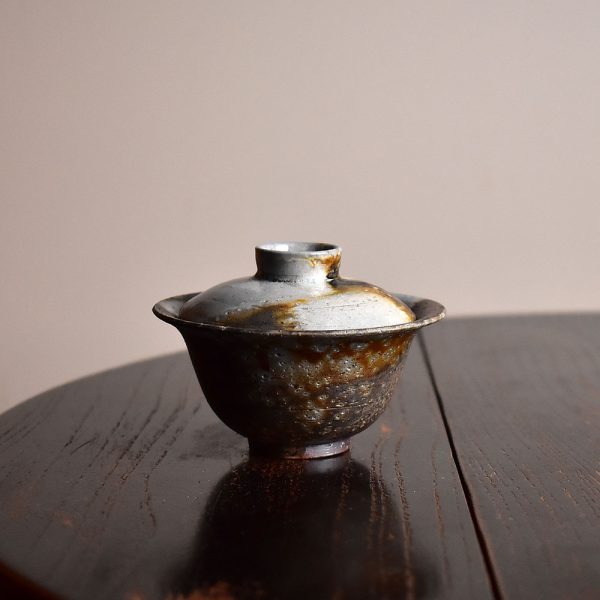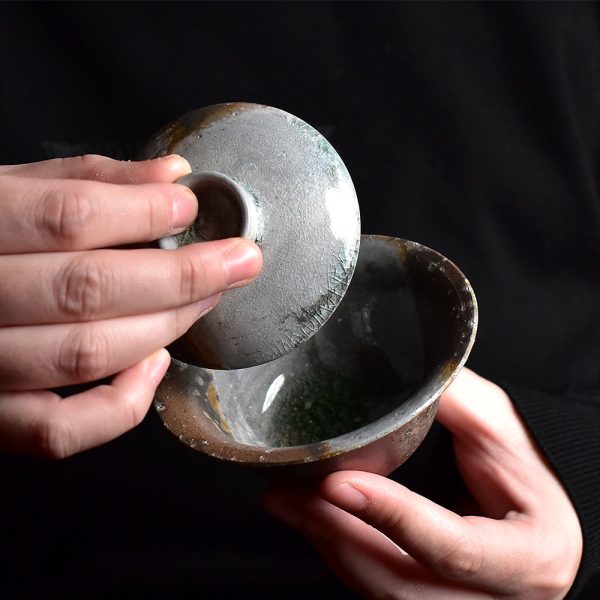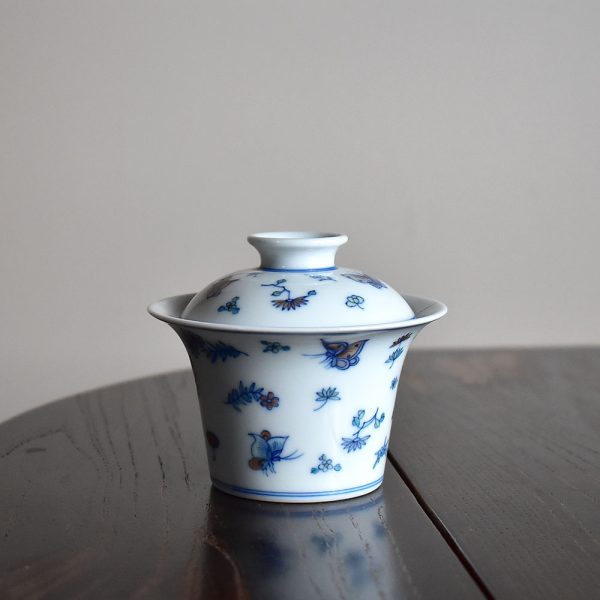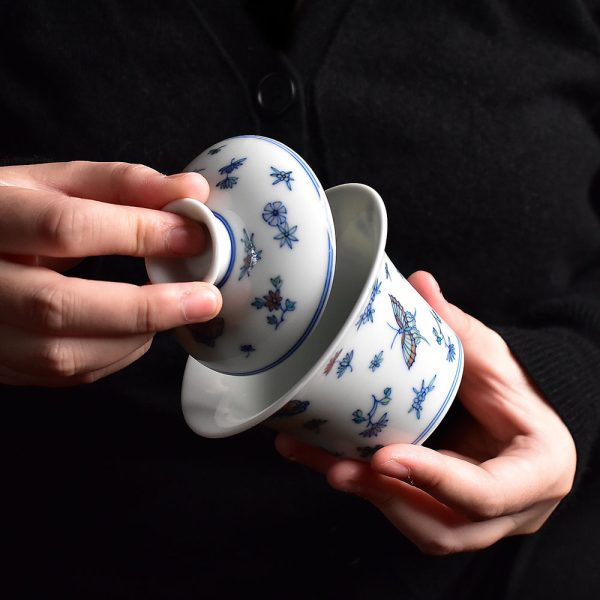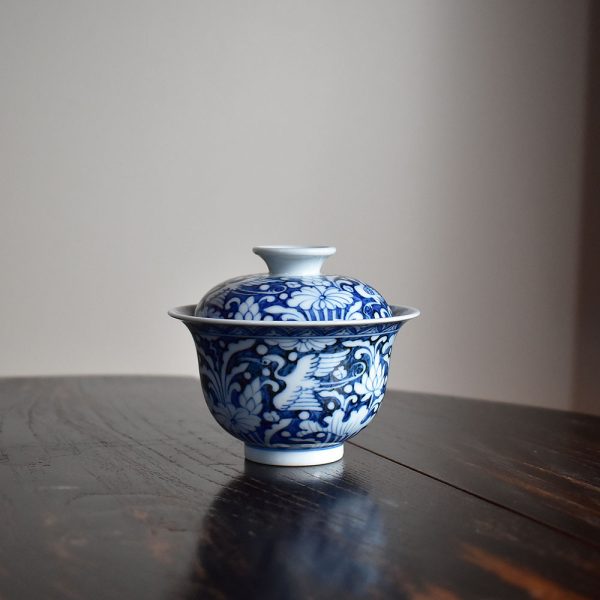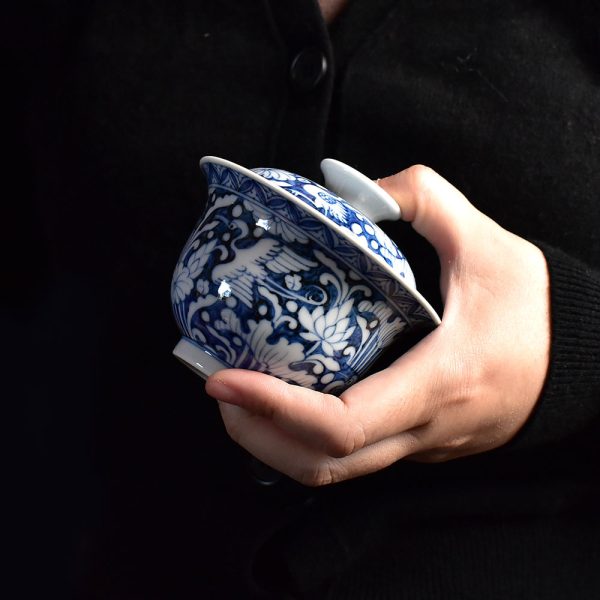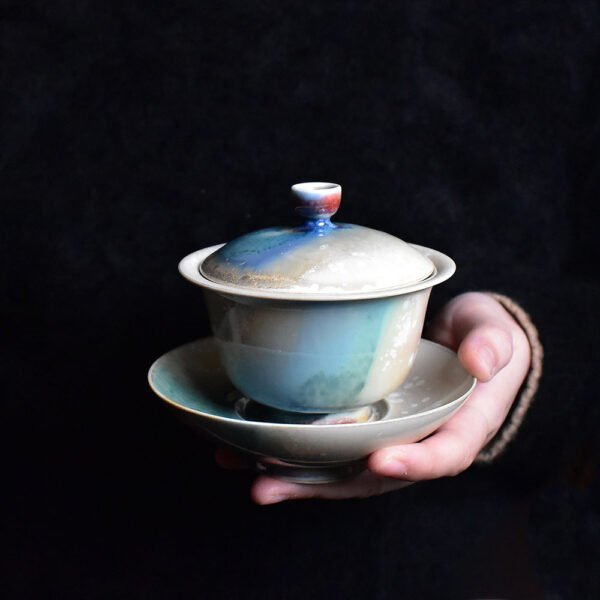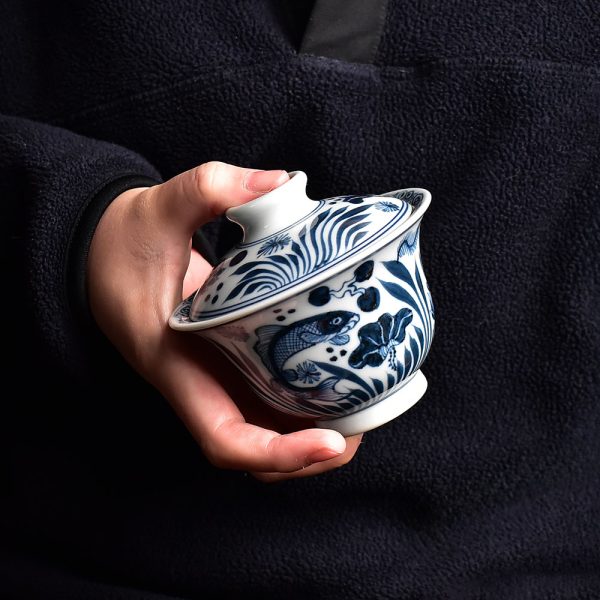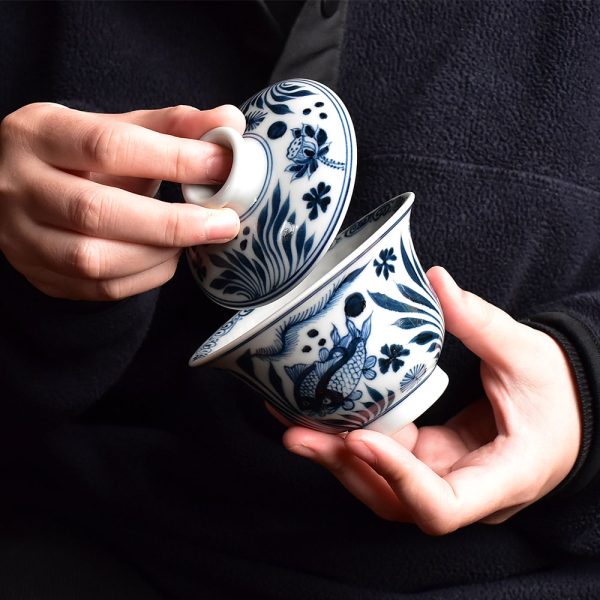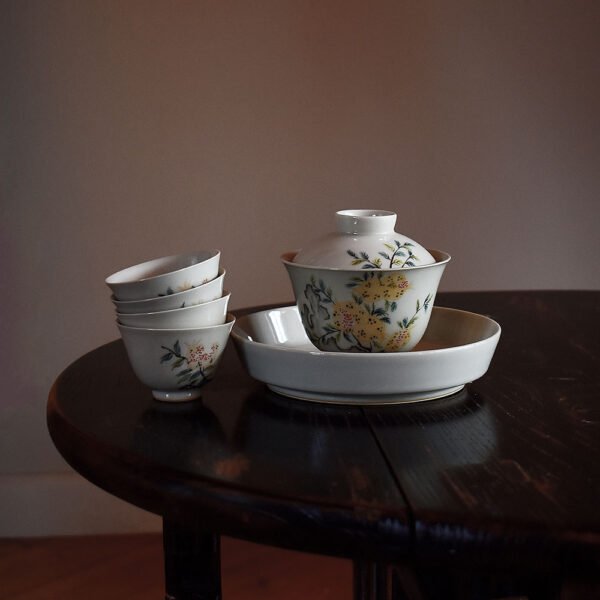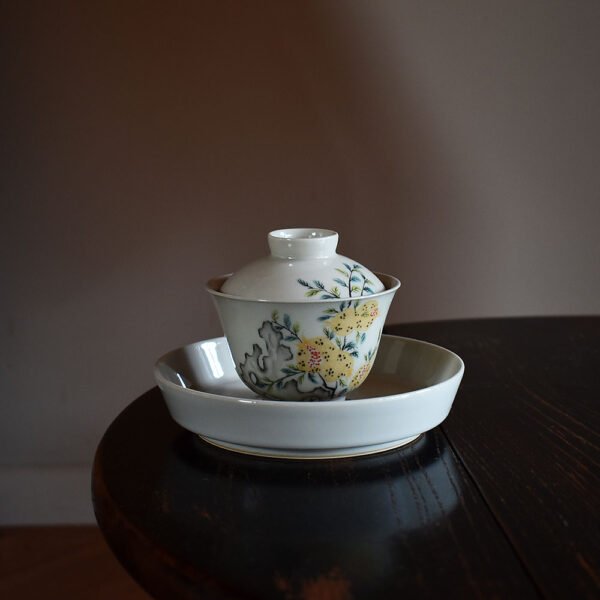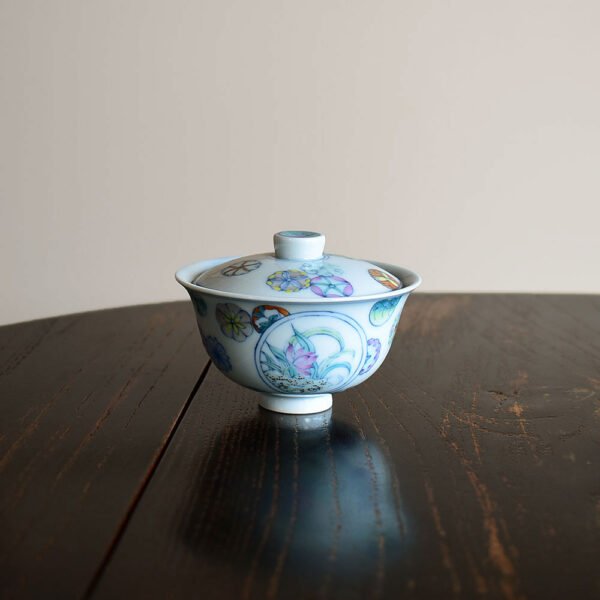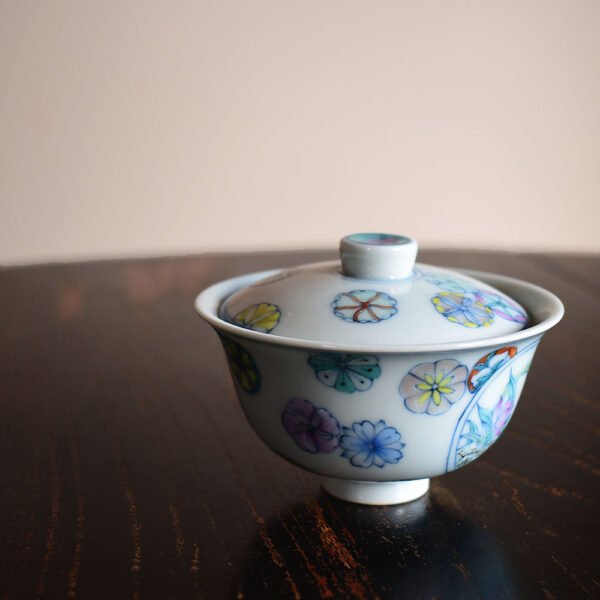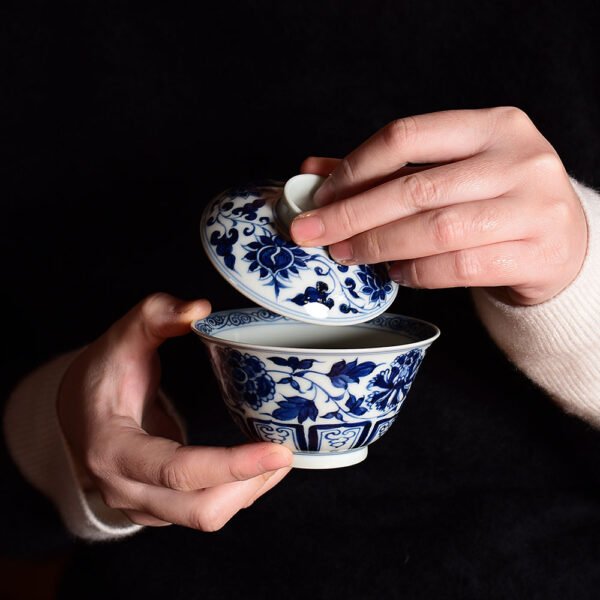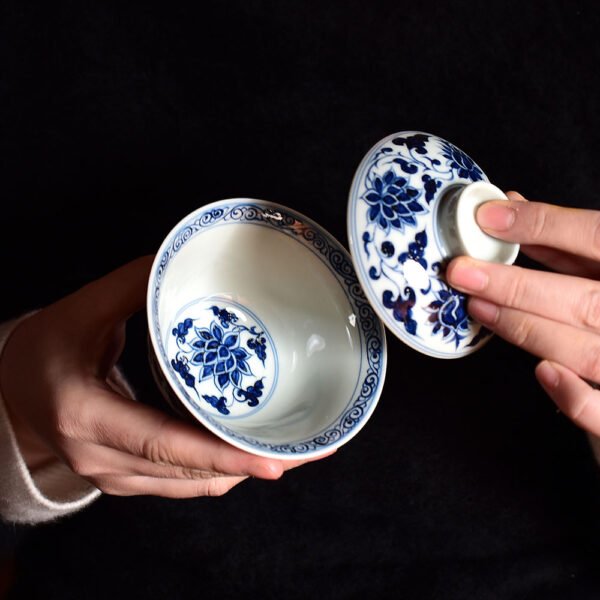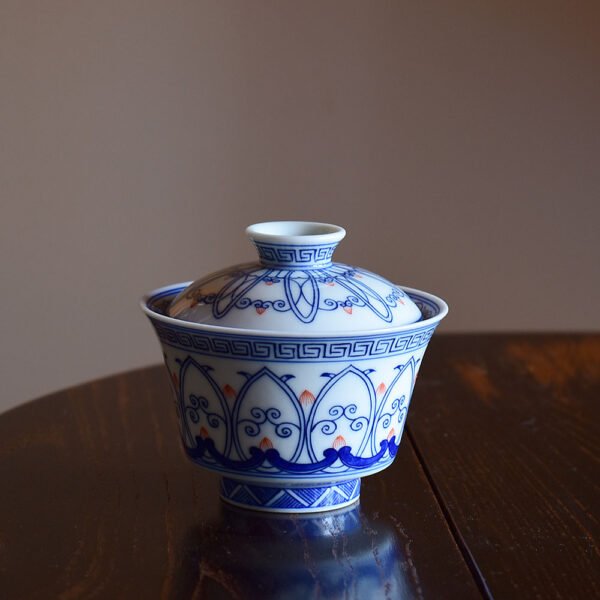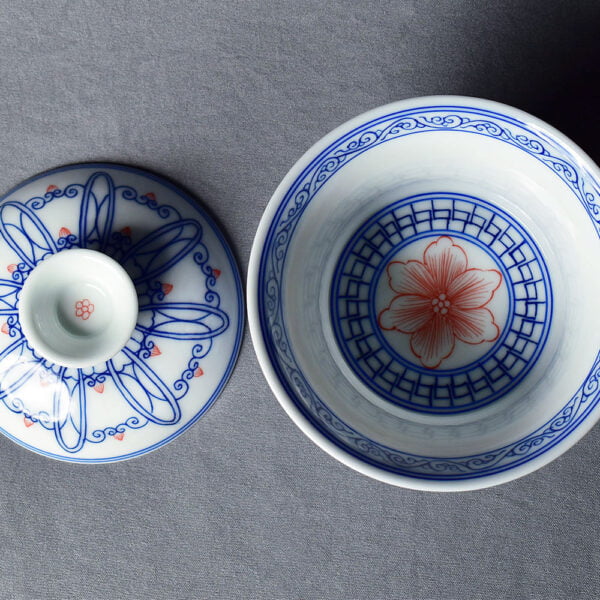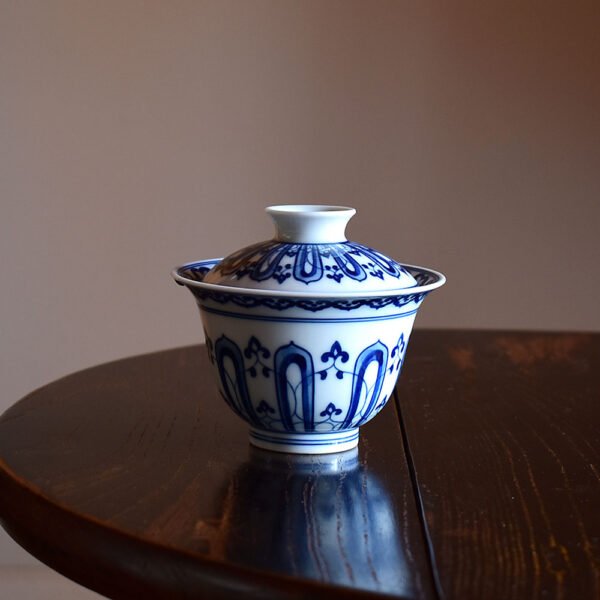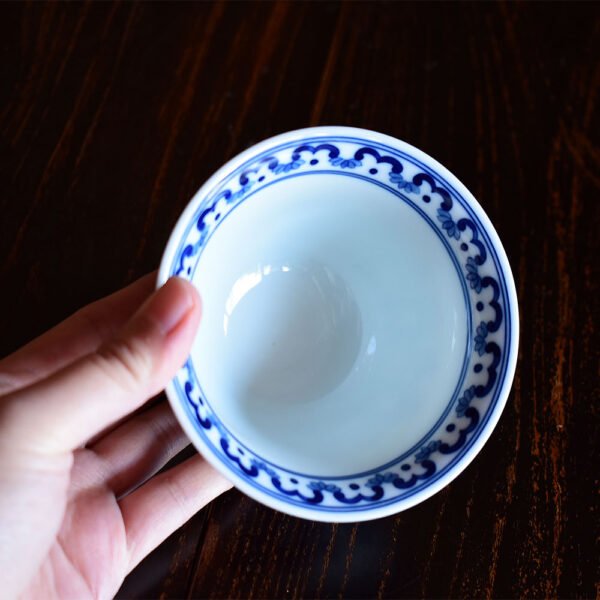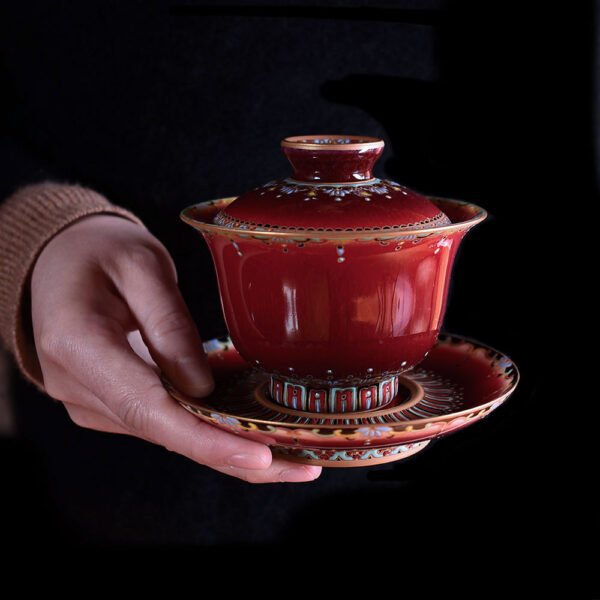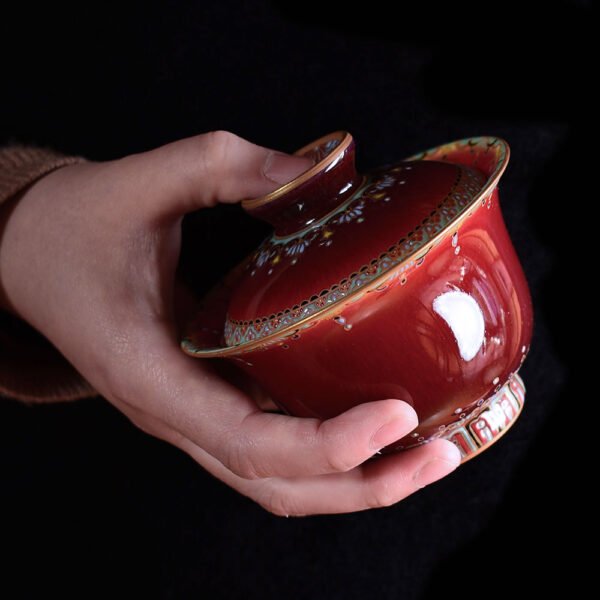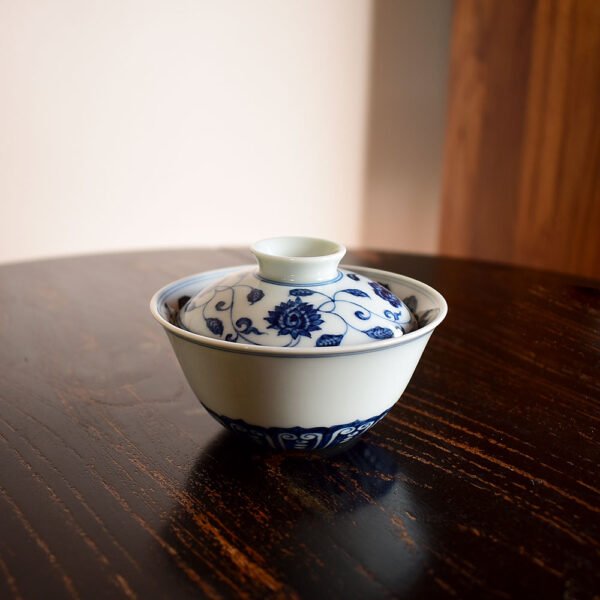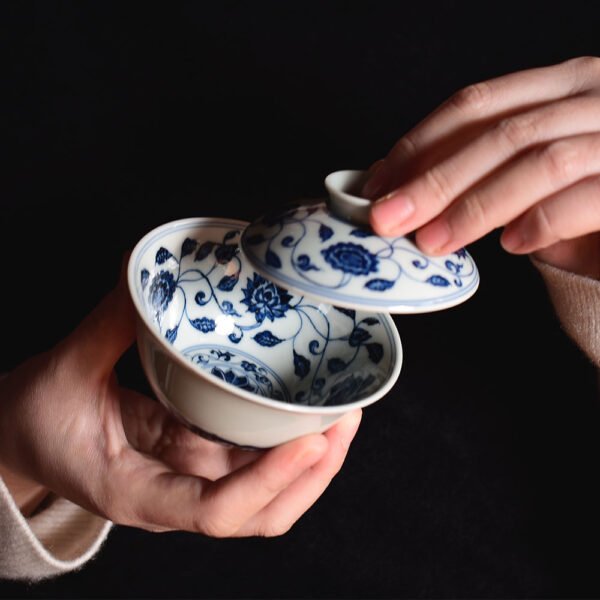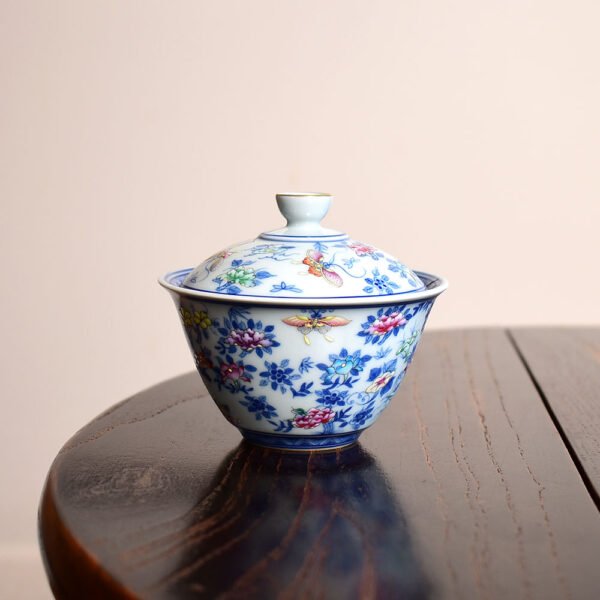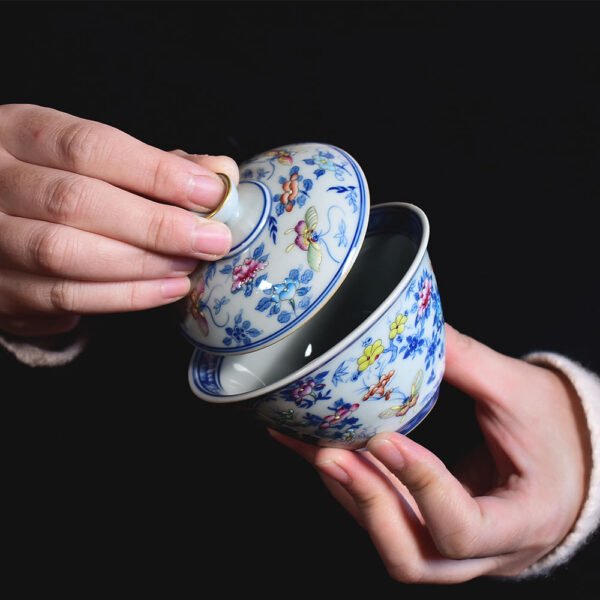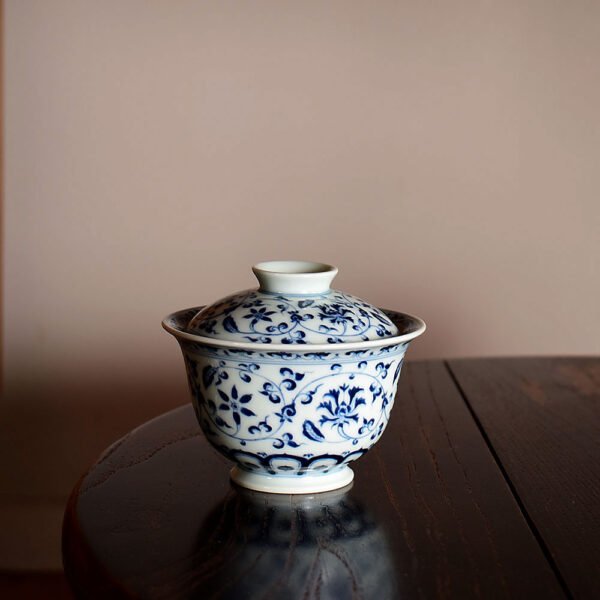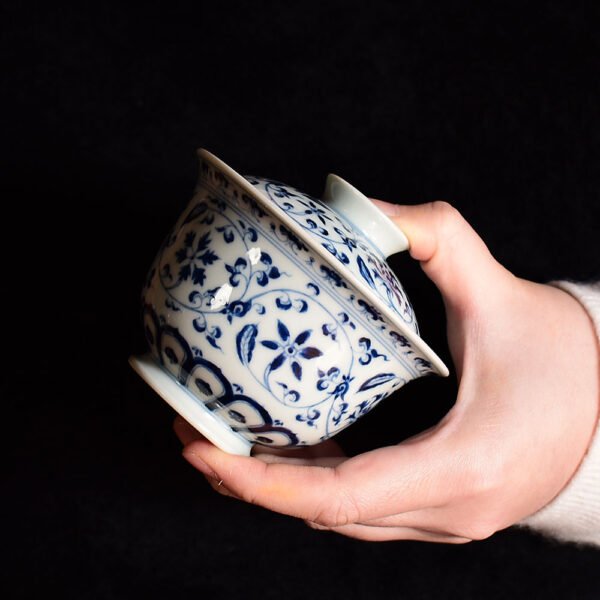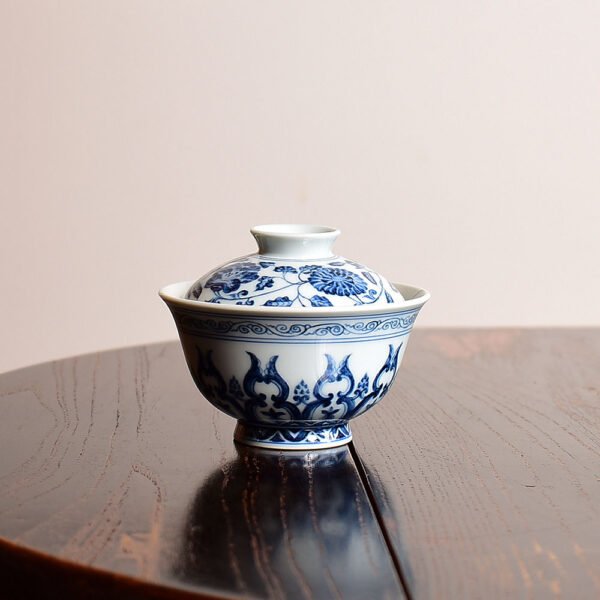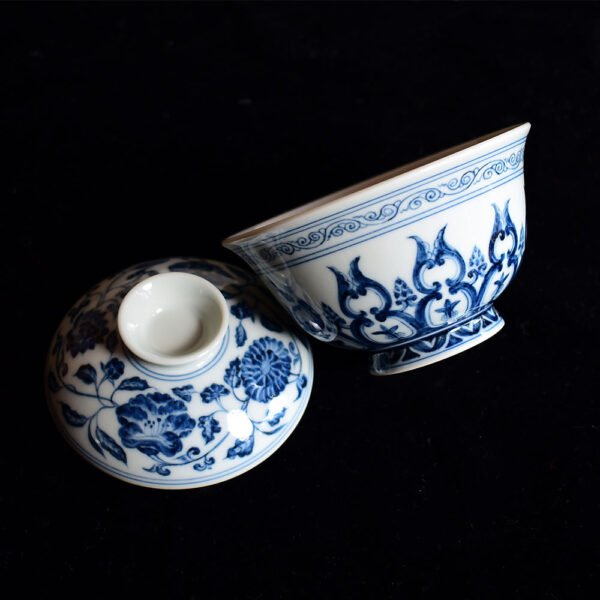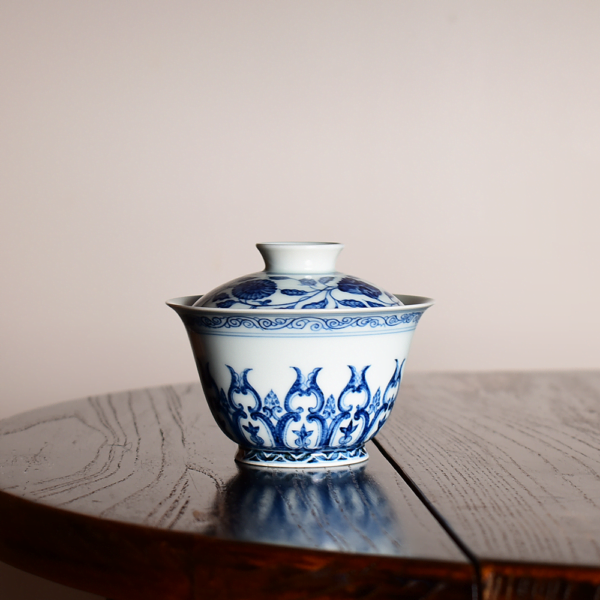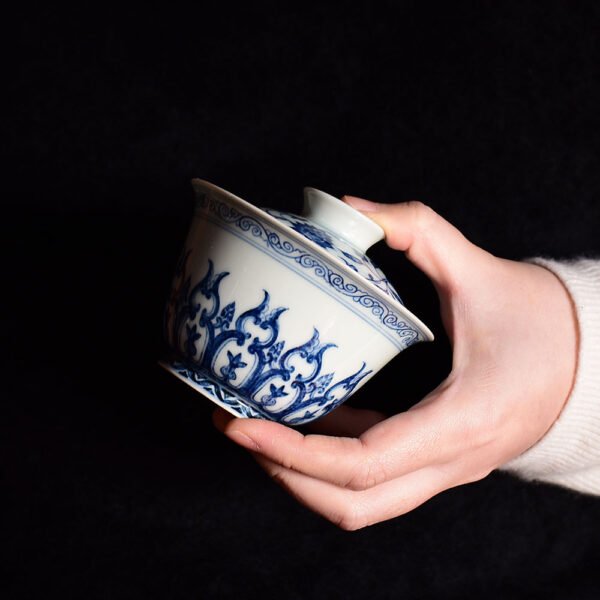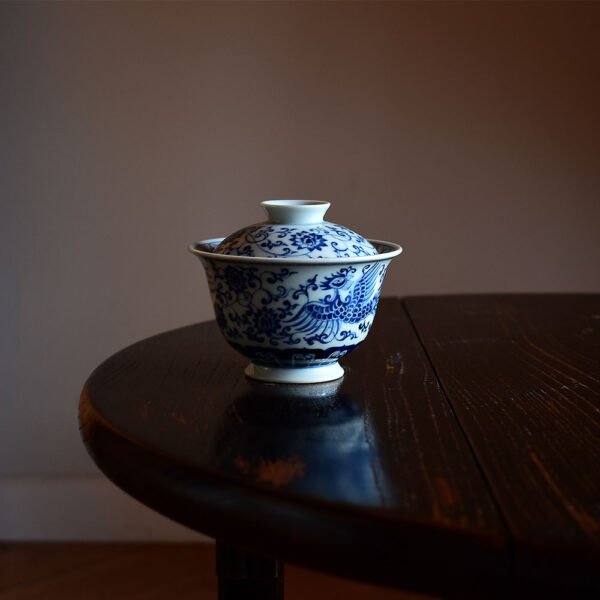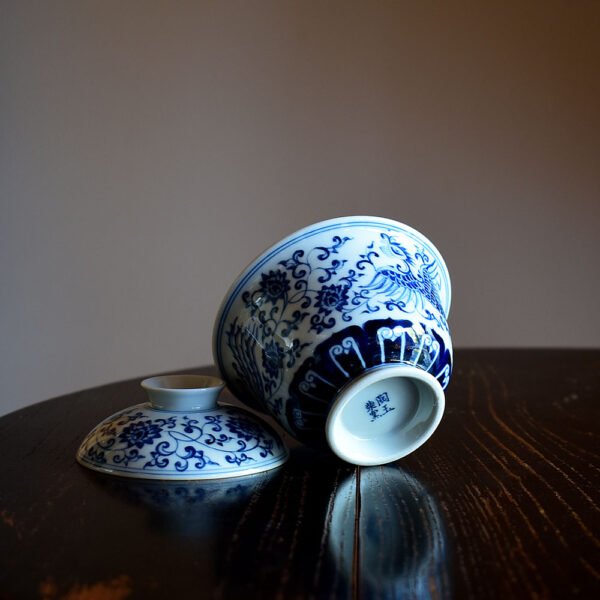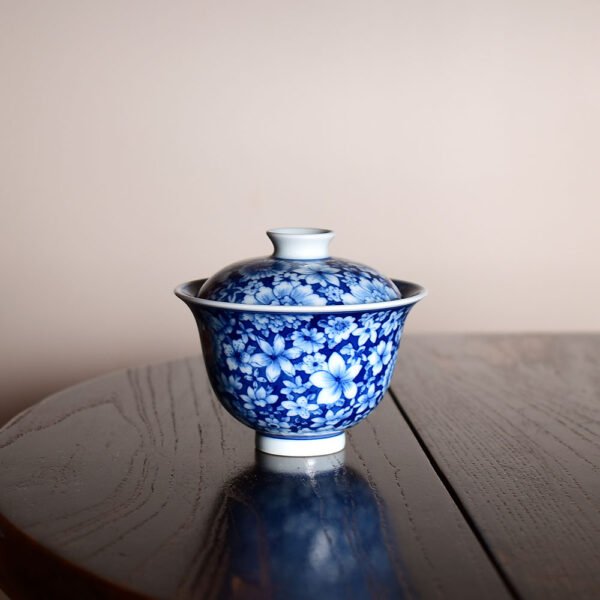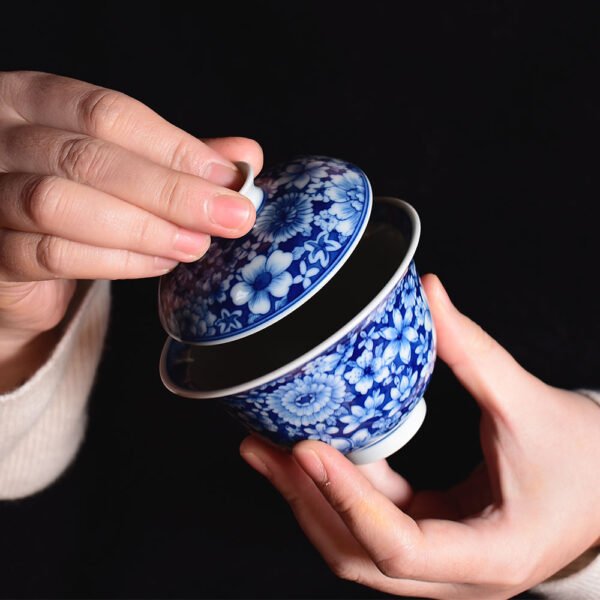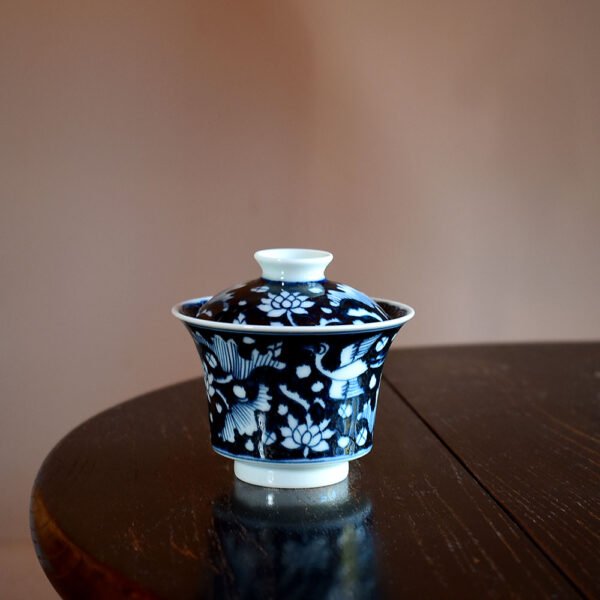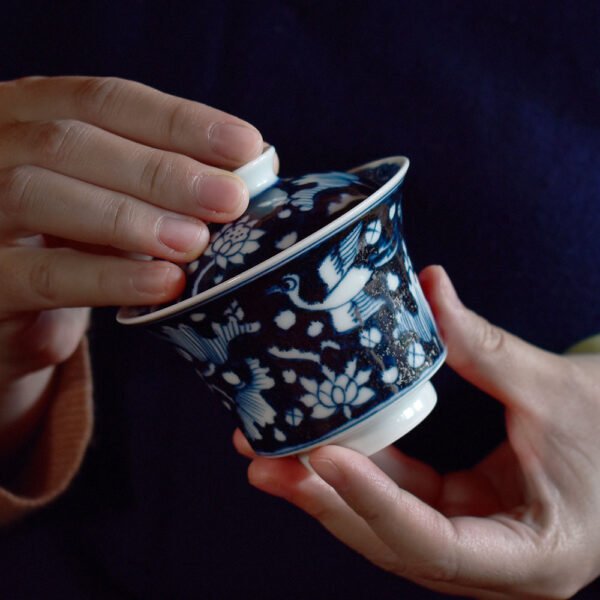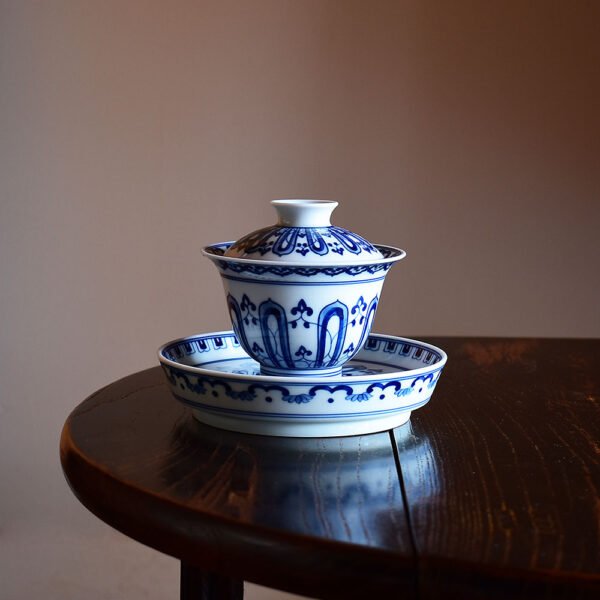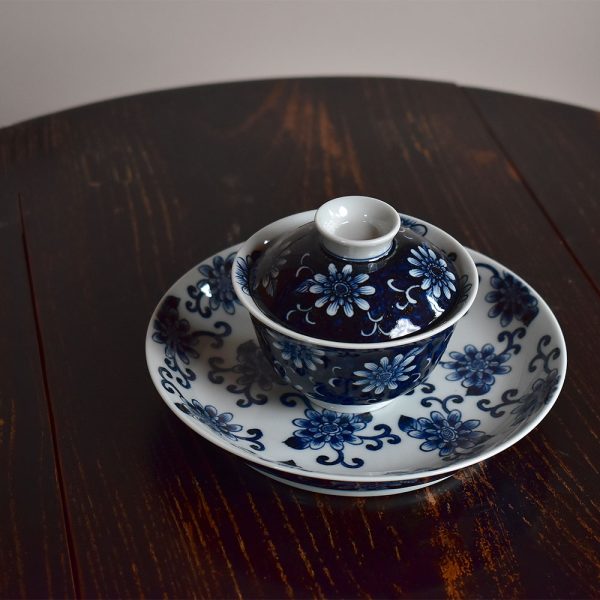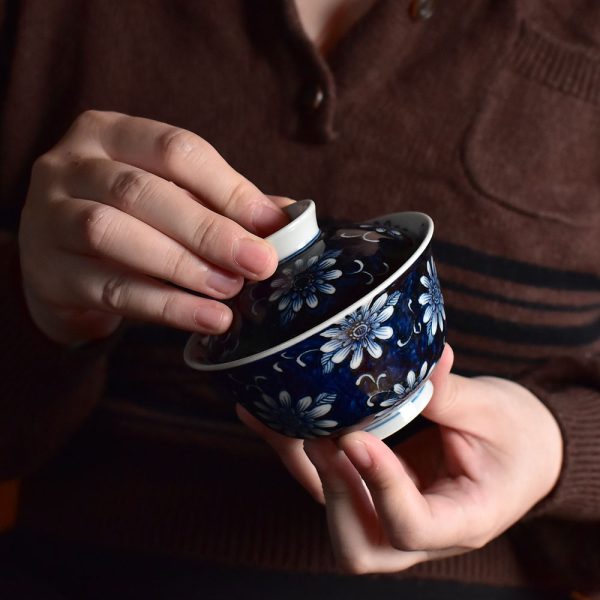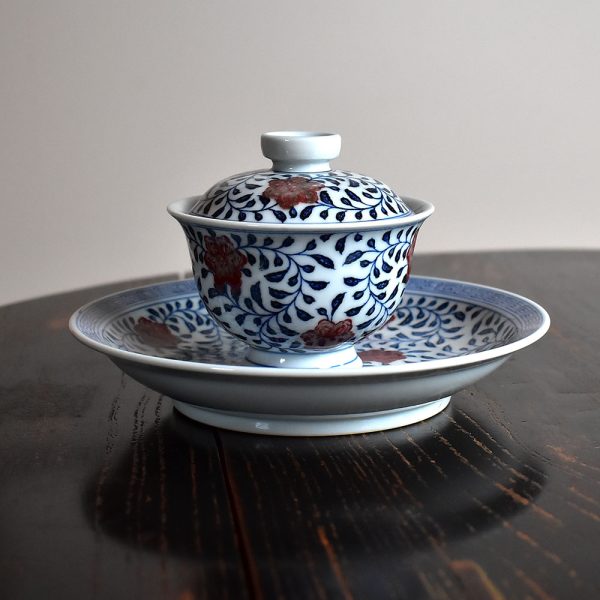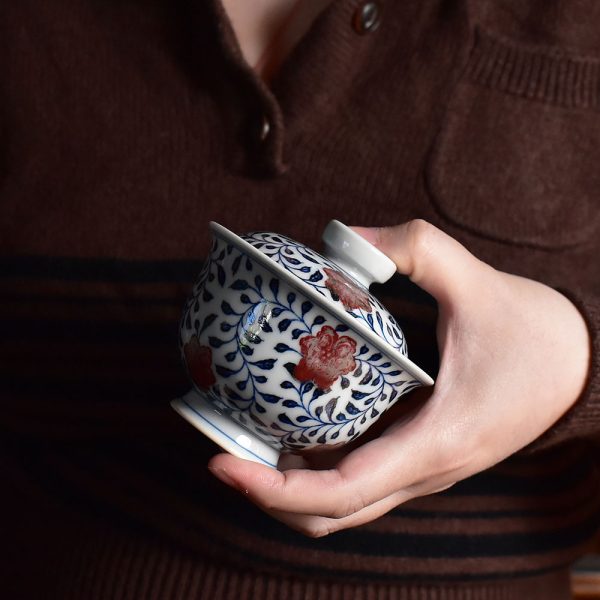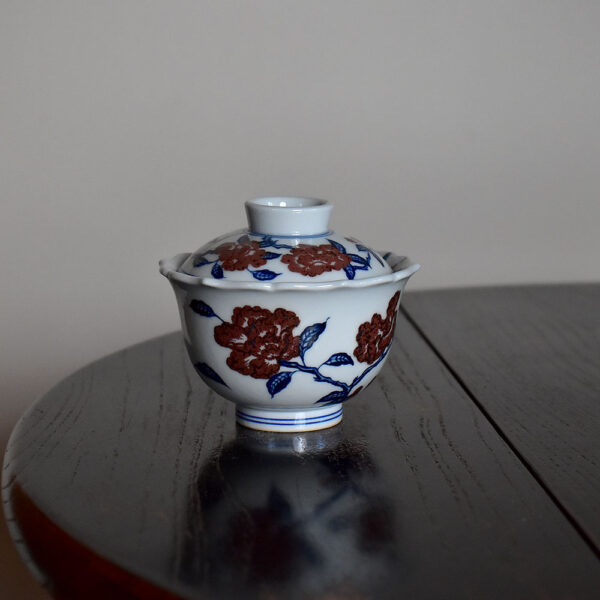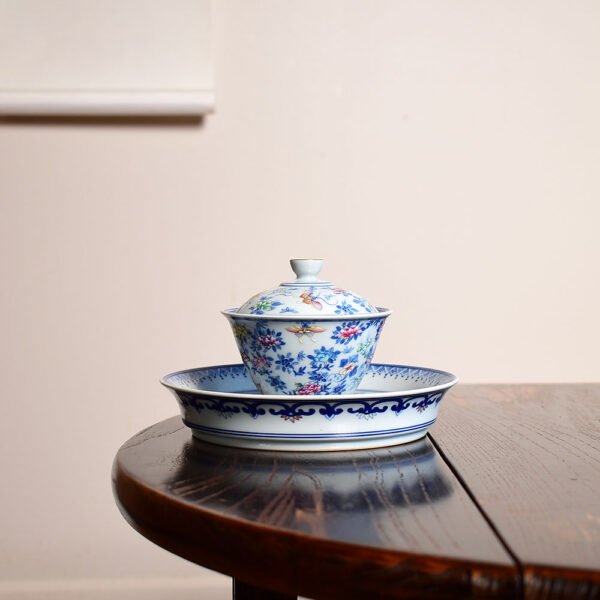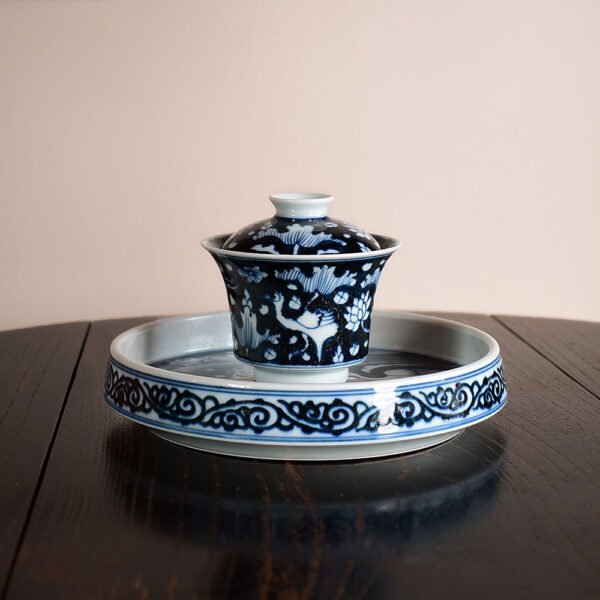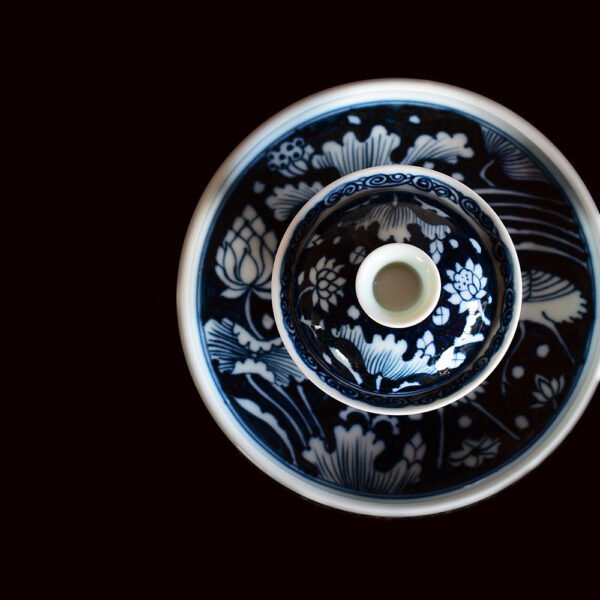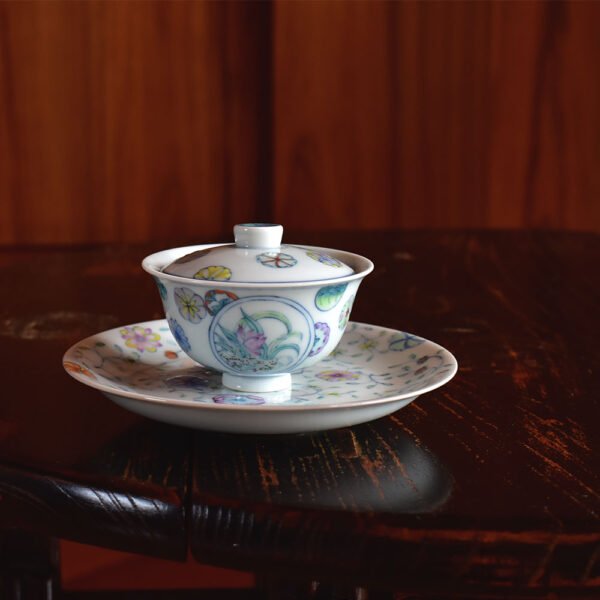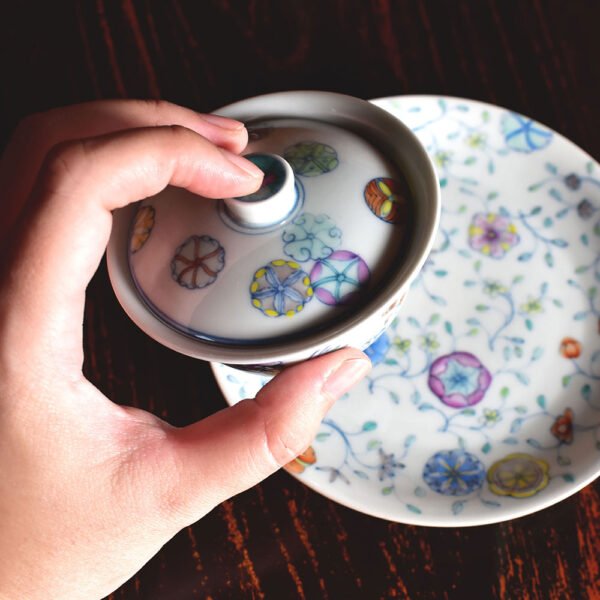Gaiwans hold a significant place in Chinese tea ceremonies, standing as one of the most versatile and practical tea vessels. They are notably inclusive, accommodating a wide variety of teas, including green tea, black tea, oolong tea, and Pu-erh tea. Moreover, they are particularly adept at steeping high-quality, loose-leaf teas.
The Beauty of the Chinese Gaiwan
The Gaiwan, originating during the Ming dynasty, is an iconic piece of traditional Chinese teaware, loved for its minimalism and functionality in brewing tea. The Qing dynasty also played a significant role in the development of Falangcai ceramics, further enhancing the craftsmanship of Gaiwans. At Hey China, we have a range of beautifully made Gaiwans for tea lovers who want to experience the art of Chinese tea brewing.
What is a Gaiwan?
A Gaiwan, which means “lidded bowl”, is a versatile teaware for brewing and drinking Chinese tea. It has three parts: the bowl, the lid and the saucer. This is known as the San Cai Gaiwan, heaven, earth and man. There is also a simpler version called the Er Cai Gaiwan, which has only the bowl and the lid. A popular example is the white ceramic gaiwan, known for its visually appealing design and practicality.
- The Bowl: The main part of the Gaiwan, the bowl is where the tea leaves are placed and hot water is added. Made from porcelain or ceramic, the bowl can be any size and shape you like, some people prefer a larger bowl for more water capacity and others a smaller one for more intense tea. De Hua ceramics are particularly prized for their smooth texture, elegance, and delicate designs, making them a favorite among tea enthusiasts.
- The Lid: The lid has multiple functions. It retains heat so the tea can steep at the right temperature and can also be used to stir the leaves gently to infuse. It’s also useful for controlling the flow of tea when pouring into a cup, to keep the leaves inside the Gaiwan.
- The Saucer: Optional but nice to have, the saucer adds beauty and functionality. It provides stability, holding the Gaiwan securely and catches any drips when pouring. It also makes it easier to handle the hot bowl without burning your fingers.
Why Gaiwan for Tea Brewing?
Versatility and Control
One of the big advantages of Gaiwan is the control it gives you over the brewing process. Unlike teapots where the tea is fully submersed and can over-steep, the Gaiwan allows you to control the steeping time exactly. It’s perfect for brewing delicate teas like green tea or oolong where small changes in brewing time can make a big difference. For those who want a complete tea brewing experience, consider purchasing a gaiwan tea set, which includes authentic ceramic and Yixing Zisha gaiwans available in various sizes and at affordable prices.
Authentic Chinese Tea Culture
Brewing tea with a Gaiwan is an experience that connects you with centuries of Chinese tea culture. The Gaiwan’s design has remained largely the same for hundreds of years, exemplified by stunning gaiwan pieces that showcase exceptional craftsmanship and vibrant colors. Using a Gaiwan allows you to see the beauty of the tea leaves as they unfurl and release the flavour, every tea session is a mindful and enjoyable ritual.
Aesthetic and Practical Design
Besides being functional, the Gaiwan is also a piece of art. The simple yet elegant design of a Chinese Gaiwan adds a touch of class to any tea ceremony. Whether you choose a classic white porcelain Gaiwan or one with intricate designs, it will be a beautiful addition to your tea ware.
How to Use
Using a Gaiwan may seem daunting at first but it’s actually quite easy once you get the hang of it. Add your desired amount of tea leaves to the bowl. Pour hot water over the leaves, then put the lid on. Let it steep for the right time for the type of tea you’re brewing. When ready, hold the Gaiwan by the rim and the saucer, tilt the lid slightly to pour the tea into a cup while keeping the leaves inside the bowl.
Browse Our Chinese Gaiwans
Hey China has a variety of Gaiwans for every tea enthusiast available at our tea shop. Whether you’re looking for a traditional San Cai Gaiwan or a simpler Er Cai one, you’ll find it here. For those seeking a complete set, we also offer a selection of gaiwan tea sets. Each one is carefully crafted so you can have an authentic tea brewing experience.








